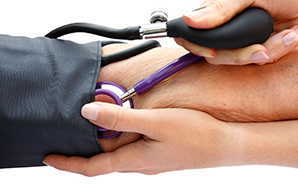High blood pressure (hypertension) is a cause in one of every two strokes and two in five heart attacks, reports the Heart and Stroke Foundation of South Africa (HSFSA). Learning what the readings mean can help you take steps to manage it before complications arise.
Normal blood pressure (BP) is what keeps the blood flowing from your heart to the rest of your body, carrying vital oxygen and nutrients. It fluctuates at times; but when your BP is consistently too high, the increased force of blood can cause the walls of your arteries to harden and thicken, resulting in heart attacks, strokes, kidney failure, blindness and erectile dysfunction.
Yet, more than half the people who have high BP are not aware of it, because it creeps up without symptoms – or with symptoms they attribute to other causes and ignore, says Professor Pamela Naidoo, chief executive of the HSFSA. This can cost lives.
Who is at risk of hypertension?
High BP can affect you whatever your age, gender, fitness level or lifestyle. About 5% of hypertension is related to genetic or secondary causes independent of lifestyle. But an unhealthy lifestyle – a diet high in saturated animal fats and excessive salt, little exercise, excessive stress, drinking and smoking – raises your risk significantly.
Your best preventative strategy is to have your blood pressure taken at least once a year from age 20, and especially from age 30, and to be guided by the numbers, says Naidoo. “If it’s raised, check at least twice a year.” It’s important to understand your blood pressure reading within your overall health and other risk factors to assess your absolute risk.
How to interpret your blood pressure reading
Blood pressure is recorded as two readings: your systolic blood pressure (SBP – the pressure when your heart contracts), over your diastolic blood pressure (DBP – when your heart relaxes between beats). When one or both of these readings (SBP or DBP) are raised on more than one occasion, you have high blood pressure – and need to seek medical advice, based on just how high it is.
Normal: This is officially a reading of SBP below 130 (mmHg) and DBP below 85
But, a major international analysis by the Institute for Health Metrics and Evaluation at the University of Washington suggests “very strong evidence” that the risk begins above 115 mmHg (SBP).
Take action: If your SBP is above 115, control it with healthy lifestyle choices and take steps to achieve and maintain a healthy weight.
High normal: SBP of 130-139 or DBP of 85-89
Take action: If you haven’t yet made lifestyle changes, this should be an inspiration for you to do so; go for regular BP checks.
Mild hypertension: SBP of 140-159 or DP of 90-99
Take action: See your health professional as soon as possible. You may be put on medication as well as told to make changes in your lifestyle.
Moderate hypertension: SBP of 160-179 or DBP of 100-109
Take action: See your health care professional at once.
Hypertensive emergency: SBP above 180 or DBP above 110
Take action: Get to your nearest hospital, says Professor Naidoo.
For more information on blood pressure, contact the HSFSA, www.heartfoundation.co.za
The accuracy of this information has been verified by Dr Ilana Joubert.
IMAGE CREDIT: 123rf.com

